 Happy 10th anniversary to the NeuroPoint Alliance (NPA)! In 2008, the NPA was established to oversee and coordinate a variety of projects involving the acquisition, analysis and reporting of clinical data affecting neurosurgical practice. The NPA initially developed and administered several small, proof-of-concept outcomes studies, including the Extracranial-Intracranial Bypass Study. Later in 2012, the NPA launched the Quality Outcomes Database (formerly N2QOD, now QOD) with an initial module on spine surgery and subsequent modules on neurovascular procedures. Over the past six years, the QOD has grown to have more than 95,000 enrolled patients across 36 states. The QOD has been the basis for several quality improvement studies, including the Readmission and Length of Stay study with the Institute of Healthcare Improvement and the Effectiveness of Grade 1 Spondylolisthesis study, supported by Medtronic and DePuy Synthes. The NPA is currently engaged with various industry representatives to conduct additional studies for pre- and post-market device surveillance.
Happy 10th anniversary to the NeuroPoint Alliance (NPA)! In 2008, the NPA was established to oversee and coordinate a variety of projects involving the acquisition, analysis and reporting of clinical data affecting neurosurgical practice. The NPA initially developed and administered several small, proof-of-concept outcomes studies, including the Extracranial-Intracranial Bypass Study. Later in 2012, the NPA launched the Quality Outcomes Database (formerly N2QOD, now QOD) with an initial module on spine surgery and subsequent modules on neurovascular procedures. Over the past six years, the QOD has grown to have more than 95,000 enrolled patients across 36 states. The QOD has been the basis for several quality improvement studies, including the Readmission and Length of Stay study with the Institute of Healthcare Improvement and the Effectiveness of Grade 1 Spondylolisthesis study, supported by Medtronic and DePuy Synthes. The NPA is currently engaged with various industry representatives to conduct additional studies for pre- and post-market device surveillance.
The NPA also oversees the management and development of multiple cooperative registries. The Stereotactic Radiosurgery Registry (SRS), generously supported by Brainlab, brings together neurosurgery and radiation oncologists to improve outcomes and support informed decision making in radiosurgery. This registry has enrolled almost 3,000 patients across 19 sites. The Registry for the Advancement of Deep Brain Stimulation Therapy in Parkinson’s Disease (RAD-PD) is a collaborative effort between functional neurosurgeons and movement disorder neurologists. The RAD-PD is helmed by a steering committee comprised of members from the AANS, the AAN and the primary funder, the Michael J. Fox Foundation, as well as representatives from Abbott and Medtronic.
The NPA is working with the Hydrocephalus Research Network to develop a registry that will be used in children’s hospitals all across the country. The NPA is also working with the Society of NeuroInterventional Surgery to merge the two organization’s respective neurovascular registries to create a single platform that will capture neurovascular procedures done by neurosurgeons and by interventional neurologists and neuroradiologists. This collaboration is of particular importance to the FDA as a way to assess new and previously approved devices. Finally, the NPA is working with the ABNS to apply its expertise in data collection, analysis and feedback to improve the board and maintenance of certification processes.
The NPA is engaged with various stakeholders to improve its registry and advance registry science. The NPA is working with the Agency for Healthcare Research and Quality (AHRQ) on its Registry of Patient Registries project to harmonize multiple existing registries for evaluating the treatment of patients with degenerative spondylolisthesis. The NPA is also participating in several other national initiatives to harmonize measures and data elements. Finally, the NPA has developed various educational offerings for current and prospective participants. This past spring at the 2018 AANS Annual Scientific Meeting, the NPA held its inaugural CME course, NPA and Your Practice: Using Registries to Enhance Quality, Reimbursement, Certification, and Clinical Research.
As I embark on my final year as chair, I am pleased with the NPA’s accomplishments so far. The NPA is poised to accomplish much more for neurosurgery over the next 10 years, including improving patient outcomes, reducing length of stay and decreasing readmissions. Patient care that is safer and more efficient will greatly increase the value of neurosurgical treatment. Towards this end, the NPA is engaged in strategy setting to refine its focus, engage participants more effectively, modernize its technology platform and improve registry management. Many thanks to the NPA’s diligent volunteer members, staff and participating centers for their tremendous efforts. Much more lies ahead.

Robert E. Harbaugh, MD, FAANS
Chair, NeuroPoint Alliance
